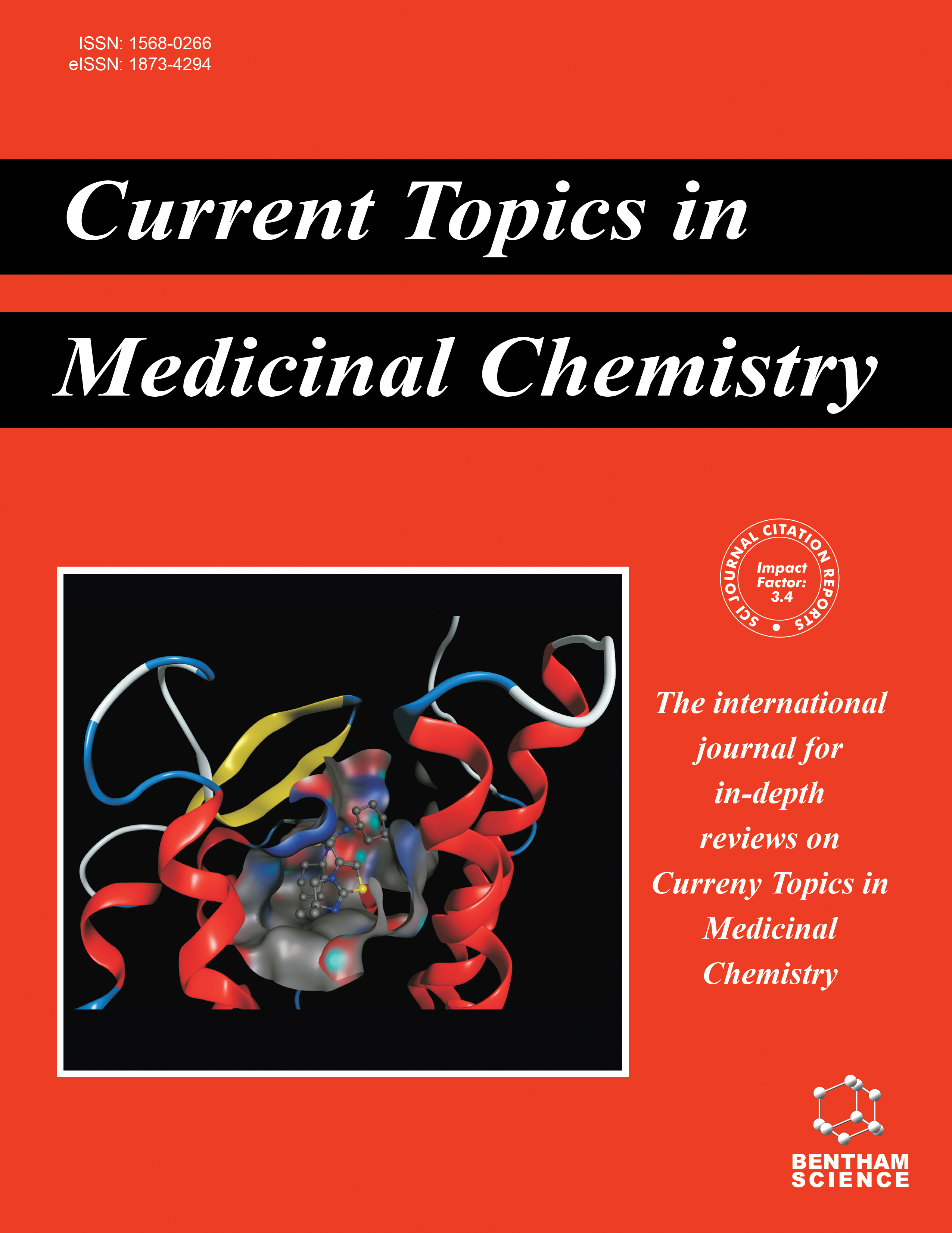- Home
- A-Z Publications
- Current Topics in Medicinal Chemistry
- Previous Issues
- Volume 8, Issue 9, 2008
Current Topics in Medicinal Chemistry - Volume 8, Issue 9, 2008
Volume 8, Issue 9, 2008
-
-
Editorial [Hot Topic: The Medicinal Chemistry of Agents Targeting the Nuclear Hormone Receptor Guest Editor: John Regan ]
More LessBy John ReganThe human nuclear hormone receptor (NHR) family consists of 48 transcription regulators which, in turn, control a vast assortment of biological functions. Receptor activation occurs upon binding with a variety of both high- and low-affinity ligands including steroids, prostanoids, retinoids, Vitamin D, oxysterols and bile acids. Many of these receptors serve as the basis for clinical intervention and involve treatments for breas Read More
-
-
-
PPAR Modulators and PPAR Pan Agonists for Metabolic Diseases: The Next Generation of Drugs Targeting Peroxisome Proliferator-Activated Receptors?
More LessAuthors: P. L. Feldman, M. H. Lambert and B. R. HenkeThe Peroxisome Proliferator-Activated Receptors-PPARα, PPARγ, and PPARδ--are members of the nuclear receptor gene family that have emerged as therapeutic targets for the development of drugs to treat human metabolic diseases. The discovery of high affinity, subtype-selective agonists for each of the three PPAR subtypes has allowed elucidation of the pharmacology of these receptors and development of first-generatio Read More
-
-
-
Recent Developments in the Discovery of Selective Glucocorticoid Receptor Modulators (SGRMs)
More LessAuthors: Andrew R. Hudson, Steven L. Roach and Robert I. HiguchiSteroidal glucocorticoids are widely prescribed for the treatment of a variety of inflammatory and autoimmune diseases. Although they are effective, the side-effects associated with chronic glucocorticoid treatment, such as osteoporosis and hyperglycemia, can severely limit their long-term use. Hence, there is a need to develop new effective anti-inflammatory agents for systemic use which are dissociated from their u Read More
-
-
-
Discovery of Structurally Diverse Nonsteroidal SPRMs Based on a Screening Hit, 1,2-Dihydro-2,2,4-Trimethyl-6-Phenylquinolinone
More LessBy Lin ZhiSynthetic steroidal progestins and antiprogestins have been widely used for decades to treat many gynecological conditions. The concept of selective progesterone receptor modulators (SPRMs) has been developed in recent years to design new therapeutic agents that have desirable PR modulating activity with significantly reduced sideeffects or increased safety margin. This review describes medicinal chemistry progres Read More
-
-
-
Recent Advances in Liver X Receptor Biology and Chemistry
More LessAuthors: Bryan J. Goodwin, William J. Zuercher and Jon L. CollinsThe Liver X Receptors LXRα and LXRβ are ligand-activated transcription factors that belong to the nuclear hormone receptor superfamily. Seminal studies with genetic and chemical tools were instrumental in the elucidation of cholesterol metabolism, gluconeogenesis, inflammation, and lipogenesis as signaling pathways that are controlled by the LXRs. First generation non-steroidal LXR agonists show beneficial effects in Read More
-
-
-
Selective Estrogen Receptor Modulator Medicinal Chemistry At Merck. A Review
More LessSelective Estrogen Receptor Modulators (SERMs) have been the subject of extensive medicinal chemistry efforts at several pharmaceutical companies, including Merck. The Merck effort produced a wide variety of SERMs including ER-?? selective antagonists and ER-?? agonists in addition to balanced (non-selective) analogs. This article will provide a broad overview of the Merck SERM medicinal chemistry effort as publishe Read More
-
-
-
Glucocorticoid Receptor Antagonists
More LessThis review covers recent progress in the discovery of selective glucocorticoid receptor (GR) antagonists. Potential therapeutic applications of selective GR antagonists are described including the pharmacological rationale and, in some cases, clinical evidence that underlies these proposed uses. Disease areas that are discussed are Cushing's syndrome, psychotic depression, diabetes, obesity, Alzheimer's disease, neuropathi Read More
-
Volumes & issues
-
Volume 25 (2025)
-
Volume 24 (2024)
-
Volume 23 (2023)
-
Volume 22 (2022)
-
Volume 21 (2021)
-
Volume 20 (2020)
-
Volume 19 (2019)
-
Volume 18 (2018)
-
Volume 17 (2017)
-
Volume 16 (2016)
-
Volume 15 (2015)
-
Volume 14 (2014)
-
Volume 13 (2013)
-
Volume 12 (2012)
-
Volume 11 (2011)
-
Volume 10 (2010)
-
Volume 9 (2009)
-
Volume 8 (2008)
-
Volume 7 (2007)
-
Volume 6 (2006)
-
Volume 5 (2005)
-
Volume 4 (2004)
-
Volume 3 (2003)
-
Volume 2 (2002)
-
Volume 1 (2001)
Most Read This Month
Article
content/journals/ctmc
Journal
10
5
false
en


